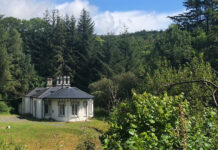
By Dr Gearóid Barry, History, NUI Galway
A chance encounter in 1925 between a Galway professor and the British soldier in charge of the firing squad that executed Cork patriot Thomas Kent on 9 May 1916, details of which have re-emerged, sheds some new light upon the execution whose centenary was marked on Monday, 9 May last in a ceremony at Cork Prison, site of the Cork Detention Barracks in 1916.
100 years on, however, some of the details surrounding the execution on 9 May of Thomas Kent remain unclear with some versions suggesting that Kent’s final request – that no Irishman be amongst the firing squad which was to shoot him- was granted by the authorities.
However, an account by Liam Ó Briain – an Irish academic who fought with the rebels in Dublin during Easter Week – relating a chance meeting in 1925 with the Royal Navy man in charge of the firing squad in Cork in 1916 suggests that it was non-Irish Royal Navy men stationed at nearby Queenstown who were chosen for the task, independent of the rebel’s possible request.

The deeply religious Kent also entrusted chaplain Fr Patrick Sexton with his temperance badge, a prized possession, to be returned to Fr Ahearne of Castlelyons, an incident which features in a contribution by Gearóid Barry of NUI Galway to a new book The End of All Things Earthly: Faith Profiles of the 1916 Leaders (edited by David Bracken and published by Veritas).
Liam Ó Briain’s brief account, meanwhile, shows apparent regret on the part of ex-navy man Price, for what he had to do. Ó Briain was himself an Irish Volunteer who knew many of the executed leaders especially Seán MacDiarmada and Michael Mallin who were executed in the same week as Kent.
He lost his teaching job at UCD’s French department for taking part in the Rising. Released from Frongoch prison camp in 1917, Ó Briain secured a post as professor of Romance languages at University College Galway (today NUI Galway) in 1917.
Price, the soldier whom Ó Briain met in Reigate, Surrey, in summer 1925, was the brother of Hereward T. Price, a British academic and old friend of Ó Briain’s, who had been a lecturer at Bonn University in Germany when the Irish academic has been there on a travelling scholarship from the new National University of Ireland just before the outbreak of the war in 1914.
Ó Briain’s account –written in Irish and appearing in Last Words, a collection of material on the executed leaders’ final days put together in the 1960s by the Kilmainham Gaol Restoration Committee – states that Professor Price’s brother had remained quiet during Liam’s visit to his friend’s home in Reigate but made a startling confession to the Irish visitor as he accompanied him to the local railway station to catch his train.
Apologizing for his awkward silence, the soldier Price, brother of O Briain’s colleague, said to him: ‘I was thinking if you knew a certain thing about me you might refuse to sit in the same room as me.’ Stationed with the Navy in Queenstown in 1916, he told Ó Briain that ‘your business in Dublin caused a rare shake-up in the forces in Cork and, to make a long story short, I found myself in charge of a firing squad, the squad which executed one of your men.’
It was indeed Thomas Kent -‘ aye, that was the name’- and when asked how he died, Price added: ‘Oh, very bravely, not a feather out of him.’
Liam Ó Briain’s career – as a revolutionary, an esteemed professor of French and cultural figure, even appearing on the early Late Late Show in the 1960s- is one that bears revisiting in this centenary and features strongly in a new exhibition at NUI Galway entitled A University in War and Revolution: The Galway Experience which runs until November 2016.
Alongside the family dramas of the deaths of Richard Kent and policeman William Rowe, the brief encounter in Reigate casts once again a humane light on the dramatic events of the Rising and its aftermath in Cork. Cork readers are welcome to visit the free exhibition in Galway in the coming months.
Further details at http://www.nuigalway.ie/anationrising/







